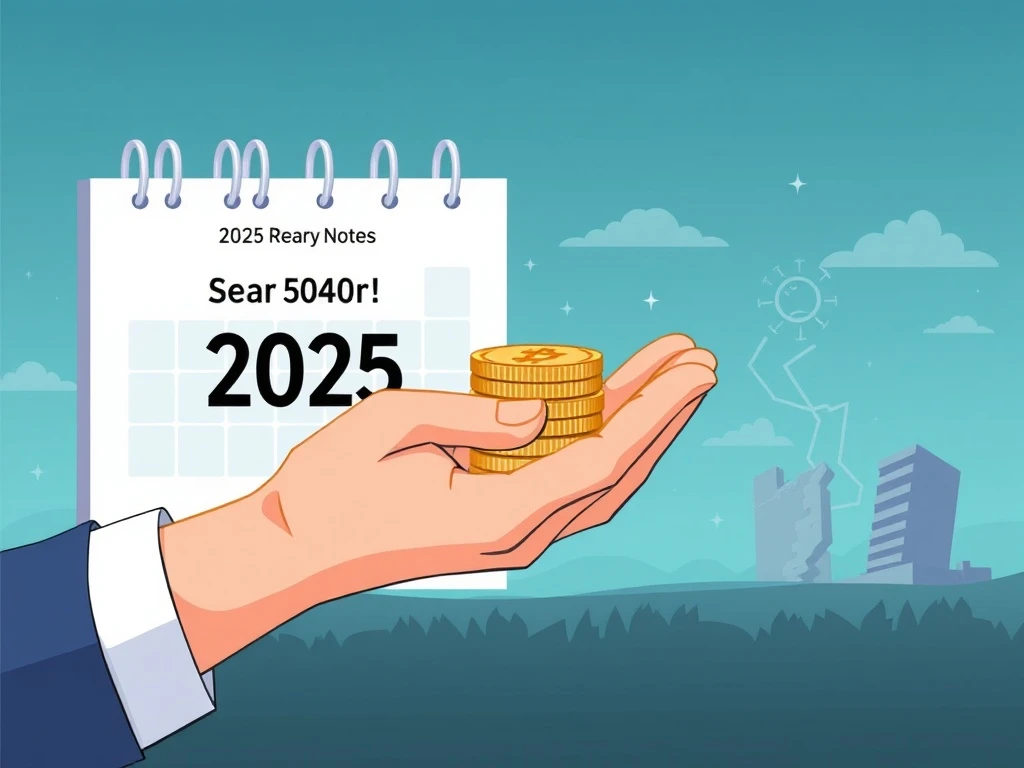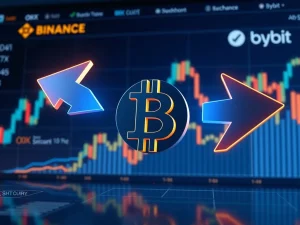Monumental FTX Payout: $1.9 Billion Set for Creditors by September 2025

After years of uncertainty and legal battles, a significant development has emerged for those impacted by the collapse of FTX. The defunct crypto exchange is poised to make a monumental FTX payout of $1.9 billion to its creditors by September 30, 2025. This highly anticipated distribution marks a critical step forward in resolving one of the largest and most complex crypto bankruptcies in history, offering a glimmer of hope for many who lost funds in late 2022.
A Crucial FTX Payout: What Does It Mean for Creditors?
The announcement confirms that FTX Trading Ltd. has received U.S. bankruptcy court approval to release funds previously held for disputed claims. This decision paves the way for the third installment in FTX’s extensive recovery plan. Set for September 30, 2025, this $1.9 billion FTX payout is a direct result of the court’s move to reduce the disputed claims reserve, freeing up liquidity to prioritize verified creditors.
- Target Date: September 30, 2025
- Amount: $1.9 billion
- Source of Funds: Previously reserved funds for disputed claims
- Process Facilitators: FTX Recovery Trust, BitGo, Kraken, and Payoneer
This distribution is specifically aimed at those who completed their Know Your Customer (KYC) compliance by the August 15 deadline. For many FTX creditors, this payout represents a tangible step towards recovering some of their lost assets, though the journey has been fraught with challenges.
Who Are the FTX Creditors and What Are Their Challenges?
The pool of FTX creditors includes individuals and institutions worldwide who had funds on the exchange when it collapsed. While the upcoming payout is a welcome development, it’s not without its controversies. A major point of contention stems from the valuation method: crypto assets are being reimbursed based on their prices in November 2022, the time of FTX’s collapse. This means that if the value of a cryptocurrency has significantly increased since then, creditors will receive less than the current market value, leading to widespread dissatisfaction.
For example, if a creditor held Bitcoin that was worth $17,000 in November 2022 but is now worth over $60,000, their reimbursement will be based on the lower 2022 valuation. This has led to frustration among many stakeholders who feel they are not being fully compensated for their losses.
Navigating the Aftermath of a Crypto Bankruptcy: Lessons Learned
The FTX case serves as a stark reminder of the complexities inherent in crypto bankruptcy proceedings. Unlike traditional financial bankruptcies, crypto insolvencies introduce unique challenges related to asset valuation, jurisdictional complexities, and the volatile nature of digital assets. The court’s intervention in reducing disputed claims reserves reflects a delicate balance between expediting verified claims and managing unresolved disputes that have historically delayed distributions.
This situation draws parallels to historical cases like Mt. Gox, where creditors faced prolonged delays and significant valuation discrepancies. FTX’s restructuring mirrors these patterns, highlighting systemic challenges in the crypto industry’s legal and recovery frameworks. The need for clear regulatory guidelines and efficient recovery mechanisms becomes increasingly apparent with each major crypto collapse.
The Path to FTX Recovery: What’s Next for the Exchange?
The $1.9 billion allocation is a significant portion of FTX’s ongoing FTX recovery efforts, but it remains a fraction of the firm’s total liabilities, which reportedly exceed tens of billions. The success of this particular round hinges on administrative efficiency. Any delays in the verification processes or distribution could erode trust in the recovery framework, which is already fragile.
FTX’s efforts also involve navigating intricate international regulatory complexities. Reports suggest an ongoing reassessment of payment restrictions in certain jurisdictions, indicating a global effort to streamline the distribution process. This phased approach to recovery aims to restore some level of confidence among stakeholders, even as the broader market watches closely for further developments.
Addressing Lingering Creditor Claims and Future Outlook
Despite this major step, not all creditor claims are fully resolved. Sunil Kavuri, a prominent creditor representative, has noted that many claims remain under review, with legal motions addressing jurisdictional restrictions still pending. This underscores the intricate nature of these large-scale bankruptcy cases, where every detail can impact the final outcome for thousands of individuals.
Market analysts caution that future distributions may face constraints if new disputes arise or if the pool of verified claims expands unexpectedly. While the court has expressed confidence in the current approach, the dynamic nature of such a large-scale insolvency means that vigilance and adaptability will be key for all parties involved. The September 2025 payout is a pivotal moment, showcasing the interplay between judicial oversight and operational execution in the complex world of crypto asset recovery.
In conclusion, the impending $1.9 billion FTX payout represents a significant, albeit challenging, milestone in the arduous journey of FTX’s liquidation. It offers a tangible step towards resolution for many affected FTX creditors, demonstrating the ongoing efforts to navigate the complexities of crypto bankruptcy. While the valuation method remains a point of contention, this distribution is a crucial part of the broader FTX recovery, emphasizing the need for robust legal frameworks and efficient processes to handle future creditor claims in the evolving digital asset landscape.
Frequently Asked Questions (FAQs)
When will FTX creditors receive their payout?
FTX creditors are set to receive a $1.9 billion payout on September 30, 2025. This date follows a U.S. bankruptcy court’s approval to release funds.
How much is the upcoming FTX payout?
The upcoming distribution, described as the third installment in FTX’s recovery plan, amounts to $1.9 billion.
Why are some FTX creditors dissatisfied with the valuation?
Many creditors are dissatisfied because their crypto assets are being valued at their November 2022 prices (when FTX collapsed), rather than their current market values. This can result in reimbursements significantly lower than what their holdings would be worth today.
What is the role of KYC in the FTX payout process?
Creditors needed to complete Know Your Customer (KYC) compliance by August 15 to be prioritized for this payout. This process ensures the identity of the recipient and adherence to regulatory standards.
Will there be more FTX payouts in the future?
While the $1.9 billion payout is significant, it’s a fraction of FTX’s total liabilities. Future distributions may occur, but they could face constraints if new disputes arise or the pool of verified claims expands. The process is ongoing, and further announcements are expected.
How does FTX’s recovery compare to other crypto bankruptcies?
FTX’s restructuring shares similarities with other major crypto bankruptcies, such as Mt. Gox, particularly regarding prolonged delays, valuation discrepancies, and complex international legal challenges. It highlights systemic issues in the industry’s approach to insolvency.









